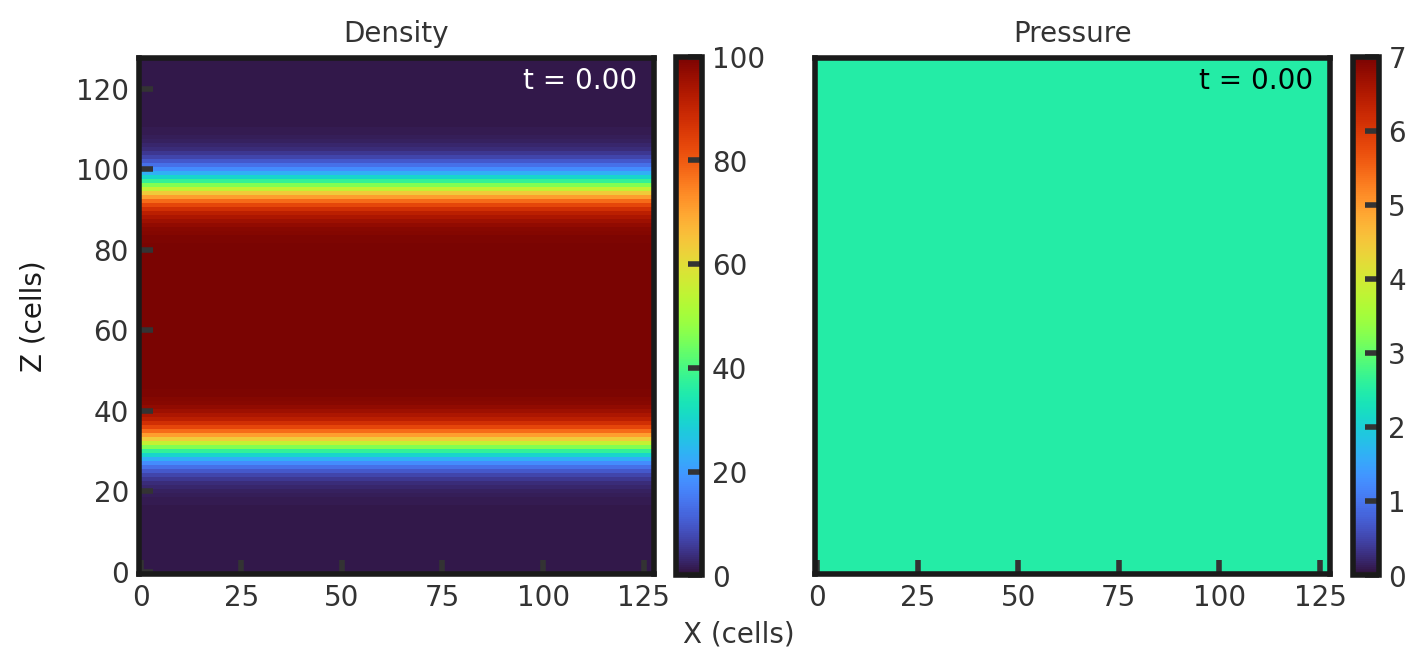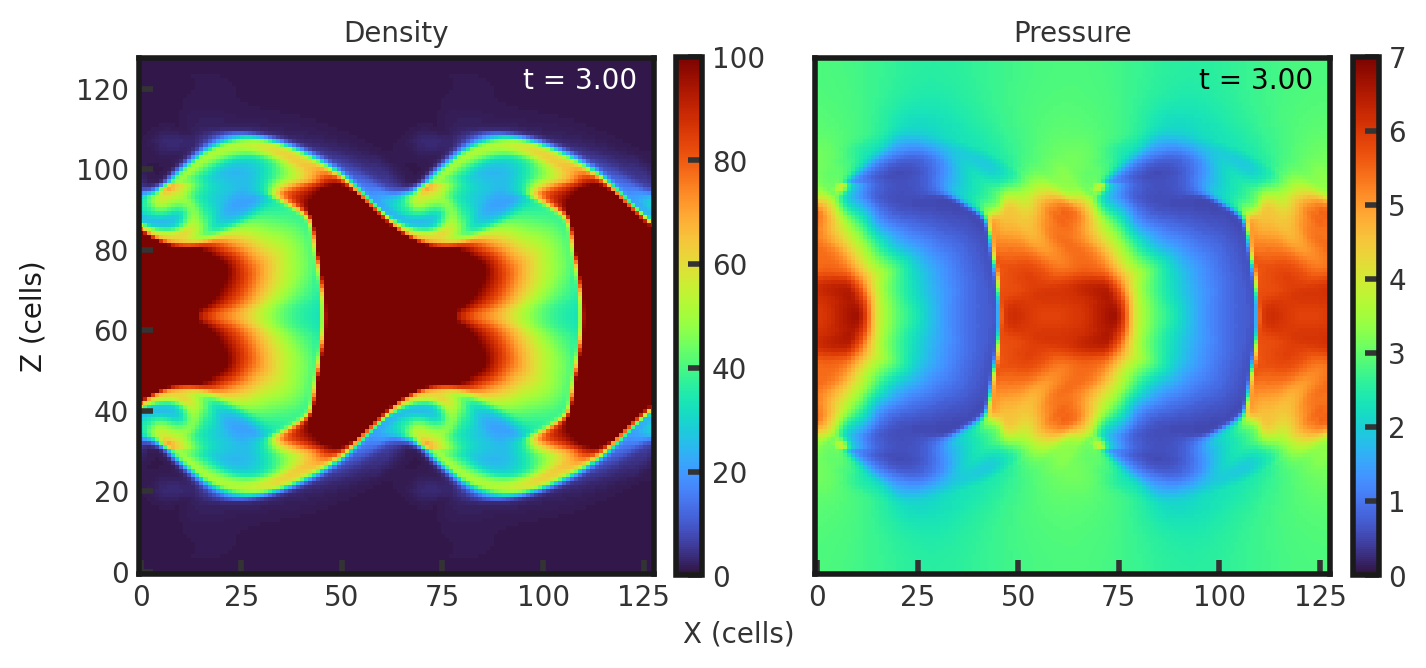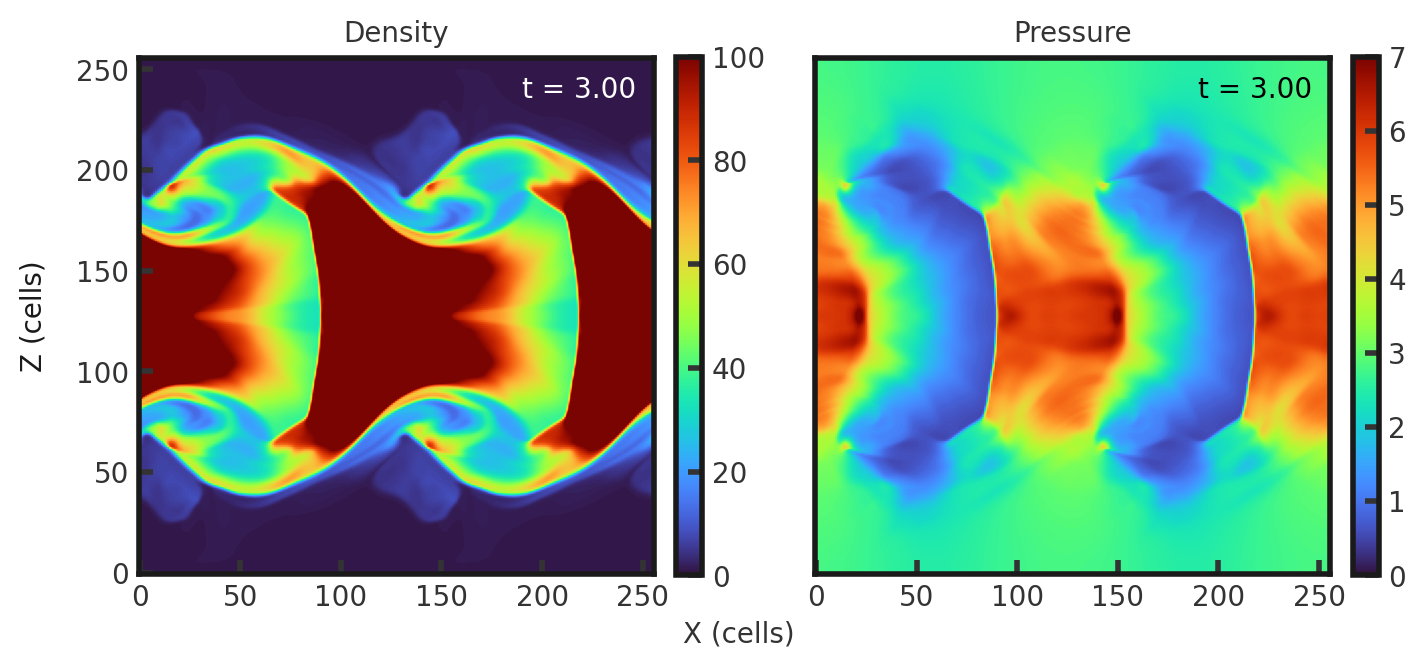-
Notifications
You must be signed in to change notification settings - Fork 32
3D KH Resolution Independent
This test highlights the ability of a code to resolve mixing caused by shear flows, emphasizing the importance of an efficient, high order reconstuction method and a fast code. In general, the level of mixing would increase with the resolution; however, this is a resolution independent version. The test consists of a region of higher density (100) sandwiched between two regions of lower density (1.0). The high density layer has a velocity of 10.5 and the low density layers have a velocity of 9.5. Pressure is set to 2.5 and a 1% pertubation (amplitude of 0.1) is added to the high denisty layer to provoke the instability. Gamma is set to 1.6666666666666667. This test is performed with the default hydro build (cholla/builds/make.type.hydro). Full initial conditions can be found in cholla/src/grid/initial_conditions.cppunder KH_res_ind().
#
# Parameter File for the 3D resolution independent Kelvin-Helmholtz test.
#
######################################
# number of grid cells in the x dimension
nx=128
# number of grid cells in the y dimension
ny=128
# number of grid cells in the z dimension
nz=128
# final output time
tout=3.0
# time interval for output
outstep=3.0
# value of gamma
gamma=1.6666666666666667
# name of initial conditions
init=KH_res_ind
# domain properties
xmin=0.0
ymin=-0.5
zmin=-0.5
xlen=1.0
ylen=1.0
zlen=1.0
# type of boundary conditions
xl_bcnd=1
xu_bcnd=1
yl_bcnd=1
yu_bcnd=1
zl_bcnd=1
zu_bcnd=1
# path to output directory
outdir=./
Upon completion, you should obtain two output files. The initial and final densities and pressure for two different resolutions (in code units) of a slice along the y-midplane is shown below. Default resolution (128x128x128) is compared to a high-res version (256x256x256). Note the differing scales of the colorbars. Examples of how to plot projections and slices can be found in cholla/python_scripts/Projection_Slice_Tutorial.ipynb.
Initial conditions:

Lower resolution solution:

Higher resolution solution:

We see that eddies have formed as a result. The mixing is highly symmetrical and forms a repeating pattern. Notably, mixing is independent of resolution: while higher resolution provides smoother density and pressure gradients, it does not impact the level of mixing.
We can also compare the time evolution of the density at lower and higher resolutions. The evolution is highly similar until eddy formation moves into the non-linear regime after t=3: